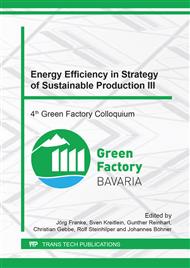p.153
p.161
p.169
p.176
p.186
p.193
p.199
p.208
p.220
Automatization of the Cable-Routing-Process within the Automated Production of Wiring Systems
Abstract:
The wiring system is one of the most important and one of the most expensive part of modern passenger vehicles. It ́s production is done manually to nearly 100% since the early years of car manufacturing. Until today it wasn ́t possible to automatize these cost-intensive step of the car production in an effective and cost efficient way. This paper shows how the routing process of the wiring harness as a part of the whole production process can be automatized with easy and cost efficient production methods. Collaborative robots and 3D-printed prototypes of cable grippers were used to treat with the complexity of the job and to finally create a sustainable and cost efficient production system. Further the routing concept has been brought to a prototypical production cell which has been tested in various routing experiments at the institute’s laboratory. Finally, a discussion of the results brings up the strengths and weaknesses of the concept and shows possible solutions.
Info:
Periodical:
Pages:
186-192
Citation:
Online since:
October 2017
Authors:
Price:
Сopyright:
© 2017 Trans Tech Publications Ltd. All Rights Reserved
Share:
Citation:


